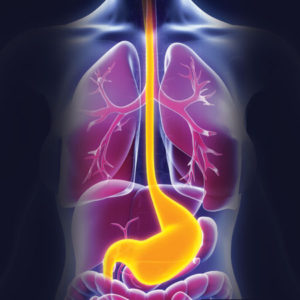Also called an “upper gastrointestinal (GI) series” or simply an “upper GI,” upper gastrointestinal tract radiography is a fluoroscopic x-ray examination of the esophagus, stomach and first part of the small intestine (also known as the duodenum). However, in order for the anatomy to show up on radiographic images, the upper gastrointestinal tract must be coated or filled with a contrast material called barium, an element that appears bright white on radiographs. The barium is given to the patient to drink. This procedure is called “upper gastrointestinal tract radiography” when the esophagus, stomach and duodenum are evaluated or a “barium swallow” when only the pharynx and esophagus are evaluated. Occasionally an additional small bowel series is requested. This evaluates the entire small bowel. Additionally, some patients are asked to swallow baking-soda crystals to create gas and further improve the images; this procedure has the modified name of “air-contrast” or “double-contrast upper GI.”
An upper GI procedure is done to observe digestive function or to detect abnormalities such as ulcers, tumors or inflammation of the esophagus, stomach and duodenum. Patients who undergo this procedure are usually those who have difficulty swallowing, are complaining of chest and abdominal pain or reflux (a backward flow of partially digested food and digestive juices), or have unexplained vomiting, severe indigestion or blood in the stool (indicating internal GI bleeding).
For more information on the upper GI test visit radiologyinfo.org (Upper GI).

